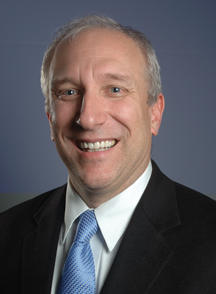I am pleased to announce that we are changing the publication frequency of “View from the Chalkboard” to better align the typical academic calendar. With each September and January issue of In Compliance we will continue to bring you topical subjects highlighting various approaches and examples of EMC education in a university setting.
Our goals are two-fold – the first is that for instructors, we want this change to assist you in your semester planning by providing you with examples that you may want to consider, and the second goal is that if you are looking for EMC education for yourself, hopefully some of the information here will help you become familiar with types of course content that you would find useful.
We are excited about this change and look forward to your feedback on what you might like to see in future editions, so – let us know what you think, or how we can help YOU. To start off our new focus – Mr. Chris Semanson describes the plans he has for the lab portion of the undergraduate EMC course (ECE 319) for the fall semester at the University of Michigan – Dearborn.
Linking “Physical” Lab Experiments and Modeling/Simulation of Electromagnetic Fields – An Exciting Learning Combination!
For this edition of “View from the Chalkboard” I want to share with you our plans at the University Of Michigan-Dearborn, as we continue to work to provide our undergraduate students with the most comprehensive undergraduate EMC course we can accomplish on our campus.
In the fall of 2014, significant capital investments in test equipment allowed us to continue our work in linking laboratory experiments to real world experiences. The result has been a course that incorporates student lab experiments demonstrating key principles of EMC. Those experiments include:
- Introduction to Signal Spectra/Antennas
- Induction and Mutual Inductance
- Characteristics of Crosstalk
- Careful measurement technique
- Inductance in the return path
In addition to experiments, an end of course “capstone” project offers students the opportunity (and challenge) to apply the teachings and techniques learned during the semester. Capstone projects are constantly updated, to remain topical, as part of our ongoing work to make the curriculum relevant. Students may choose from the following topics to explore and apply the concepts learned from their experiments.
- Reducing noise in a brushed DC motor system.
- Characterizing the effects of capacitor lead length.
- Building your own common mode current probe
- Experimenting with parasitic effects on passive filter design.
The common thread to each of these experiments and projects is that they’re all physical experiments. These hands-on experiences allow the students to relate the electromagnetic field they’re interacting with, to seeing to some voltage or frequency strength measurement using a near field probe. Of course, this requires imagination on the part of the students to visualize the complexity of the electromagnetic field make up, and while we bolster these experiments with various web-resources (such as “YouTube” videos), they lack the same interactive feel that the laboratory experiments provide.
This fall, we’ve added another learning dimension to the lab by using electromagnetic modeling/simulation software to allow students to experience the interactive feel in simulation that we instill in the laboratory experiments.
We’ve chosen an electromagnetic simulation software tool which will allow students to work on projects using modeling and simulation methods to understand both electromagnetic fields and basics of antennas.
Lab projects specifically designed to be completed using the modeling/simulation techniques will allow deeper insight and understanding of the physical labs. Students will conduct experiments that mirror existing lab experiments. Proposed topics include:
- Modeling basic antenna structures and fields (log periodic dipole, biconical, etc.).
- Modeling loop antennas, magnetic fields and mutual inductance.
- Modeling Crosstalk Characteristics of a TWP and Coaxial Cable.
- Shielded enclosures.
- Experimenting with geometric effects on inductance in the return path.
The goal of this proposed experiment list is to amplify the learning effect that the original five experiments have, allowing students to visualize the fields they’re measuring.
In addition to these new experiments, we’ll also provide final projects to simulate which might include, but are not limited to the following.
- The effects of an energy source (3/4G antenna) on a cable bundle.
- Modeling more complex antenna structures or effects of metal structures.
- The effects of electrostatic discharge.
- Near field radiation from a transmitter.
Using simulations like that shown in Figure 1, students have the opportunity to create, analyze, and understand electromagnetic fields and their effects on physical devices and circuits. We believe this exciting new learning combination will provide a valuable undergraduate learning experience.

If you would like additional information, and/or have suggestions for our next steps, please feel free to contact me at csemanso@umich.edu. I look forward to hearing from you!
 Mark Steffka is a Lecturer, an Adjunct Professor, and an automotive company Electromagnetic Compatibility Technical Specialist. Mark can be reached at msteffka@umich.edu.
Mark Steffka is a Lecturer, an Adjunct Professor, and an automotive company Electromagnetic Compatibility Technical Specialist. Mark can be reached at msteffka@umich.edu.
 Chris Semanson currently works at Ford Motor Company in the Research and Advanced Engineering group, working on Driver Assistance and Partial Autonomy of vehicles where part of his job is to focus on modeling and simulation. Chris can be reached at csemanso@umich.edu.
Chris Semanson currently works at Ford Motor Company in the Research and Advanced Engineering group, working on Driver Assistance and Partial Autonomy of vehicles where part of his job is to focus on modeling and simulation. Chris can be reached at csemanso@umich.edu.
